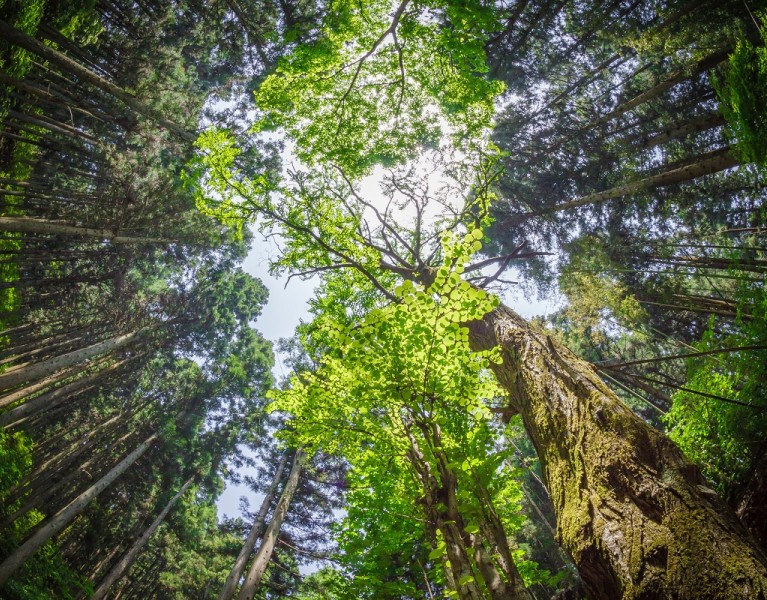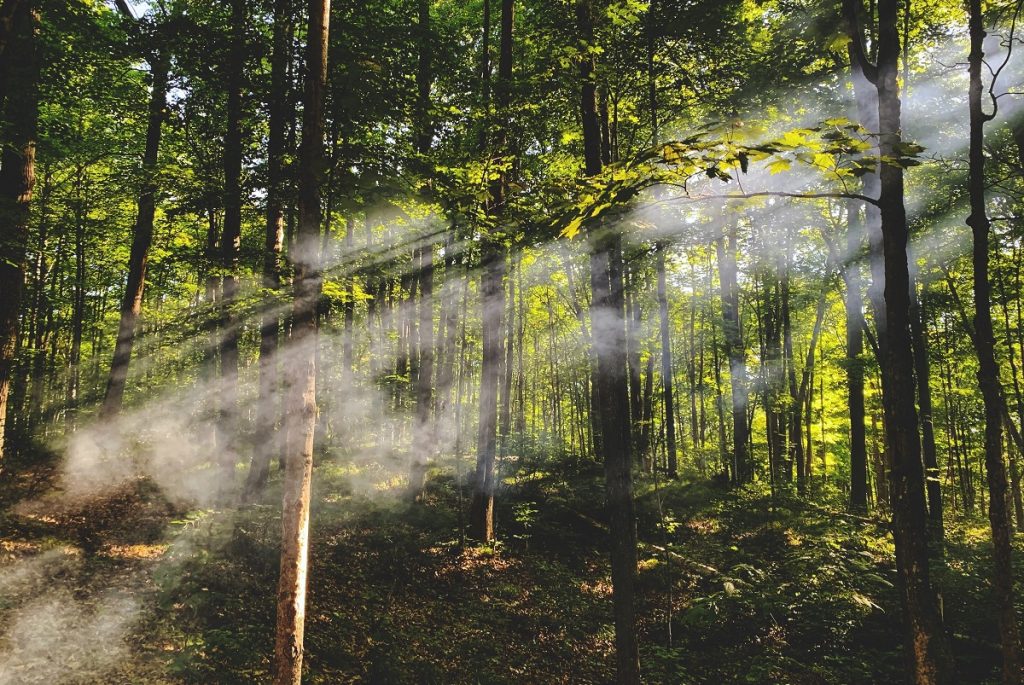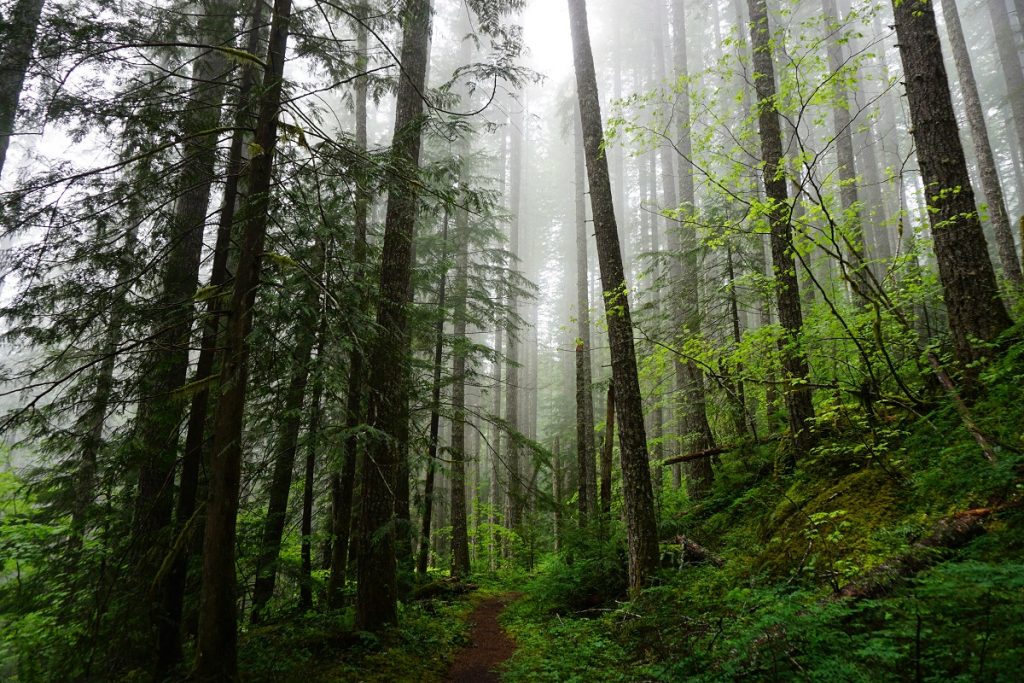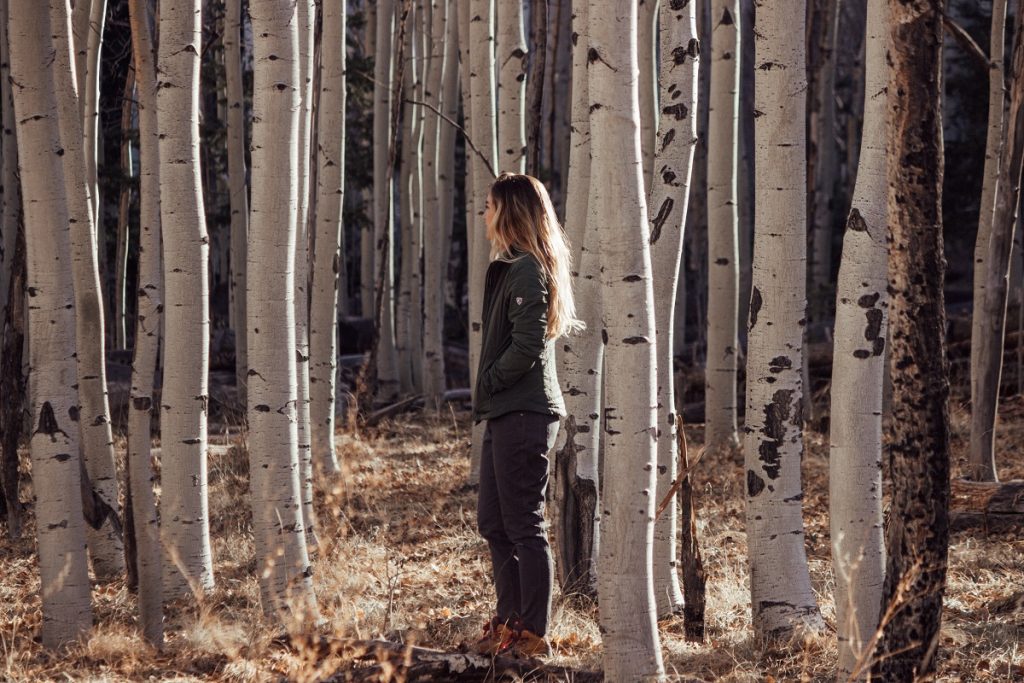- 1. What Is Forest Bathing?
- 2. Why Forest Bathing?
- 3. Health Benefits of Forest Bathing
- 3.1. Psychological Effects of Forest Bathing
- 3.2. Physiological Effects of Forest Bathing
- 3.3. Immune-Boosting Effects of Forest Bathing
- 4. How to Go Forest Bathing
- 4.1. 1. Prepare
- 4.2. 2. Find the Perfect Spot
- 4.3. 3. Leave the World Behind
- 4.4. 4. Slow Down
- 4.5. 5. Follow a Guide
- 4.6. 6. Use Your Senses
- 5. Let Forest Bathing Heal You

Forest Bathing: What Is It & How Can It Improve Your Health
Table of Contents [Show]
Connecting with nature has long been rejoiced by writers, poets, and artists worldwide. Forests, in particular, are magical, peaceful places full of wonder. Finding time to wander through the trees can have an amazing effect on both your psychological and physiological well-being. These restorative benefits of nature can be seen through the practice of forest bathing. But, just what is forest bathing, and how can it improve your health?
What Is Forest Bathing?
The practice of and phrase “forest bathing” was developed in Japan in 1982. The Japanese Ministry of Agriculture, Forestry and Fisheries created the term shinrin-yoku, which literally translates to “forest bath.” It was developed with a therapeutic purpose in mind, for preventative healthcare and a way of natural healing.
Forest bathing is not just a walk in the woods. It's different from hiking, trail running, or any type of strenuous exercise through the trees. It is the mindful, almost meditative practice of “bathing” yourself in nature (no water necessary). The goal of this activity is to be present in the moment, immerse yourself in nature, and soak in the atmosphere through your senses. In a world of increasingly indoor-based activities and technology-centered living, this type of connection is meant to give a sense of comfort and clarity, ease stress, and refresh and rejuvenate you.
Why Forest Bathing?
Forest bathing can essentially be considered forest therapy. Through heightened sensory awareness, your quality of life increases. When that heightened sensory awareness takes place in nature, in particular a dense forest, it can have an immense impact on both psychological and physiological health. There have been several studies conducted that show how this activity has true health benefits.

Health Benefits of Forest Bathing
While poets and novelists have been writing about the healing powers of nature for centuries, researchers and scientists have now conducted many studies and written their own conclusions about the concrete health benefits of spending time among the trees. Every study conducted so far has shown overall positive neuro-psychological effects which lead to improved physiological health.
Psychological Effects of Forest Bathing
The calming effects of forest bathing create changes in the nervous system, which then reduce the level of the stress hormone cortisol in your body. This means that the body’s stress-response system is being triggered less, and cortisol, a harmful hormone, is being released less. Chronic stress and the overexposure of cortisol in your system can lead to:
- Anxiety
- Depression
- Mood disorders
- Memory loss
- Lack of concentration
- Fatigue
A slow, purposeful walk through nature has been shown to decrease cortisol levels in participants by 12.4 percent. After just 15 minutes of forest bathing, concentration and mental clarity improve, and a peaceful state of mind is restored.
Physiological Effects of Forest Bathing
The practice of forest bathing can also have positive physiological effects. Some of these recorded benefits include improvements to the:
- Cardiovascular system
- Respiratory system
- Immune system
Immune-Boosting Effects of Forest Bathing
Since forest bathing can lower stress hormone production and elevate your mood, it's not surprising that it also influences immune system strength. Stress hormones can compromise immune defense by suppressing the activities of human natural killer (NK) cells, a type of white blood cell that boosts immune function.
The sensory effects of the “aromas of the forest” or phytoncides have shown to help significantly increase NK cells in the human body. Phytoncides, or airborne essential wood oils, provide a natural immunity boost. The health benefits of breathing in the fresh forest air can last up to a month.

How to Go Forest Bathing
The practice of forest bathing is fairly simple and self-explanatory. Take a few hours out of your busy life, head to a forest, and let the trees take over. Below are a few tips to help your forest bathing experience go as smoothly and peacefully as possible.
1. Prepare
Forest bathing is all about stress release and mood-boosting. A little preparation before you go can help keep stress and fatigue at bay. It’s best to go forest bathing in moderate weather, so check the forecast for rain, excessive heat, or cold. Be sure to bring sunscreen, a hat, and sunglasses. Carry a comfortable pack with snacks and water. Dress in loose-fitting clothing and in layers. Wear the proper shoes to match the terrain.
2. Find the Perfect Spot
Any natural area, park, or forest will provide a good opportunity for forest bathing. However, the denser the forest, the better the benefits. Look for a quiet, peaceful location, beautiful scenery, fresh air, and great smells. When it comes to finding your perfect spot, “one size fits all” doesn't apply. The key is finding where you feel most comfortable and relaxed.
3. Leave the World Behind
Minimize distractions by turning off your phone and stowing it in your pocket or pack. Leave behind the camera and the laptop. Listen to your body, let it guide you where it wants to take you. Let yourself fully immerse in the forest.

4. Slow Down
Forest bathing takes place at a slow, almost meditative pace. Take your time, and let the forest in. Look around and really observe your surroundings. Stop often. Sit once in a while. Be still.
5. Follow a Guide
If you are new to forest bathing or new to being in a forest, you may feel more comfortable under the guidance of a certified guide. Walking with a guide who is a trained forest therapist can help you feel more comfortable and at ease. Of course, you don’t need to use a guide to go forest bathing. Walking alone and immersing yourself solely in nature can be your best therapy.
6. Use Your Senses
The key to unlocking the healing power of the forest is in the five senses. Let it enter through your ears, eyes, nose, mouth, hands, and feet. Listen to the birds singing and the breeze rustling in the leaves of the trees. Look at the different greens of the trees and the sunlight filtering through the branches. Smell the fragrance of the forest, and breathe in the natural aromatherapy of phytoncides. Breathe deep and taste the freshness of the air. Feel the trunk of a tree. Dip your fingers or toes in a stream. Release the stress and welcome the calm. When you are able to fully engage your senses, you will truly connect with nature.

Let Forest Bathing Heal You
When you truly connect with nature, you will find yourself in a more joyful, peaceful place. This, in turn, will allow you to meet the outside world more calmly. Soaking in the atmosphere and fully immersing your senses in the forest has a proven positive psychological and physiological effect on the mind and body. So, the next time you find yourself in the forest, slow down, listen, breathe, touch, taste and smell. Let the natural therapy of the trees heal you.
Featured Image by Mitsuo Komoriya.


